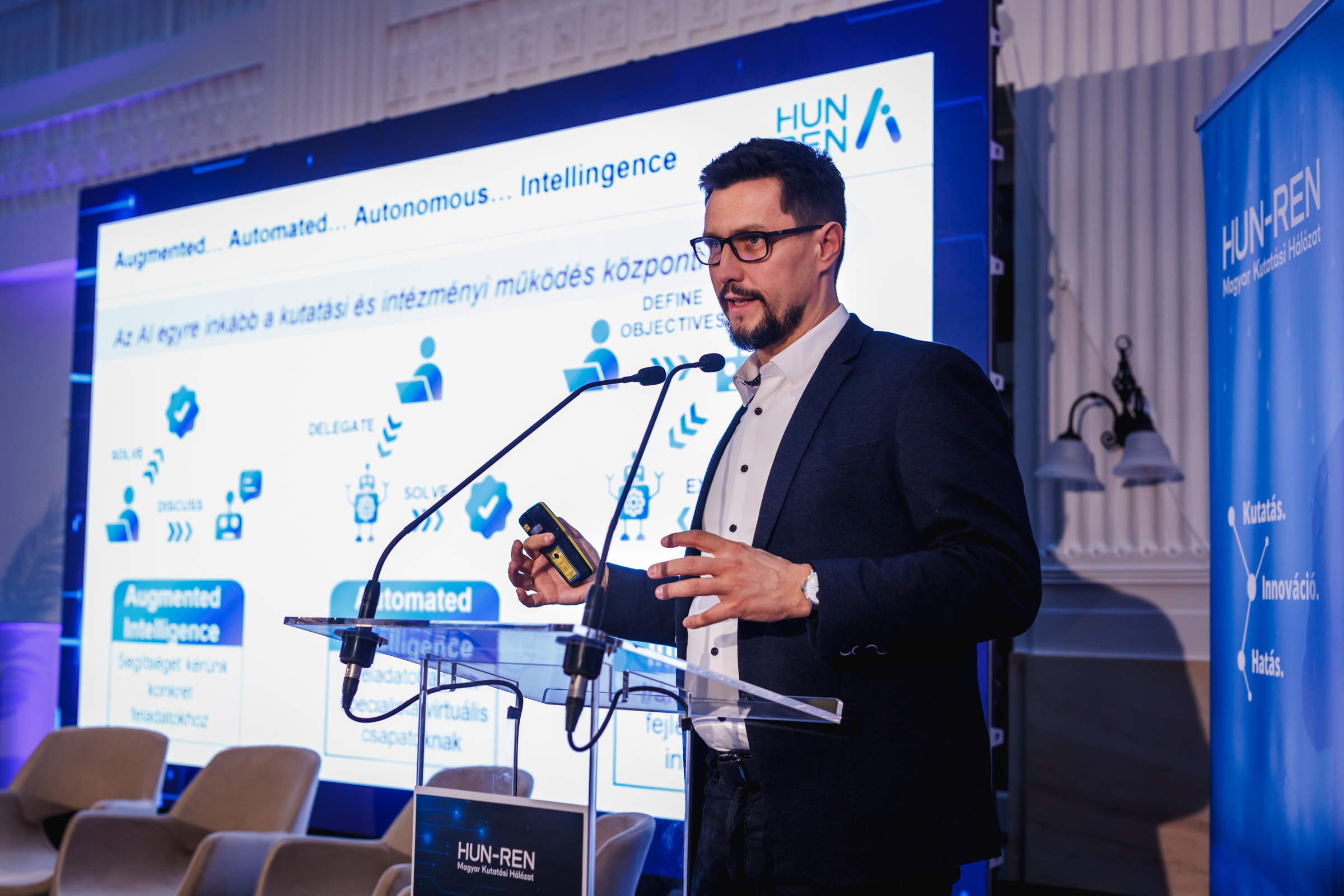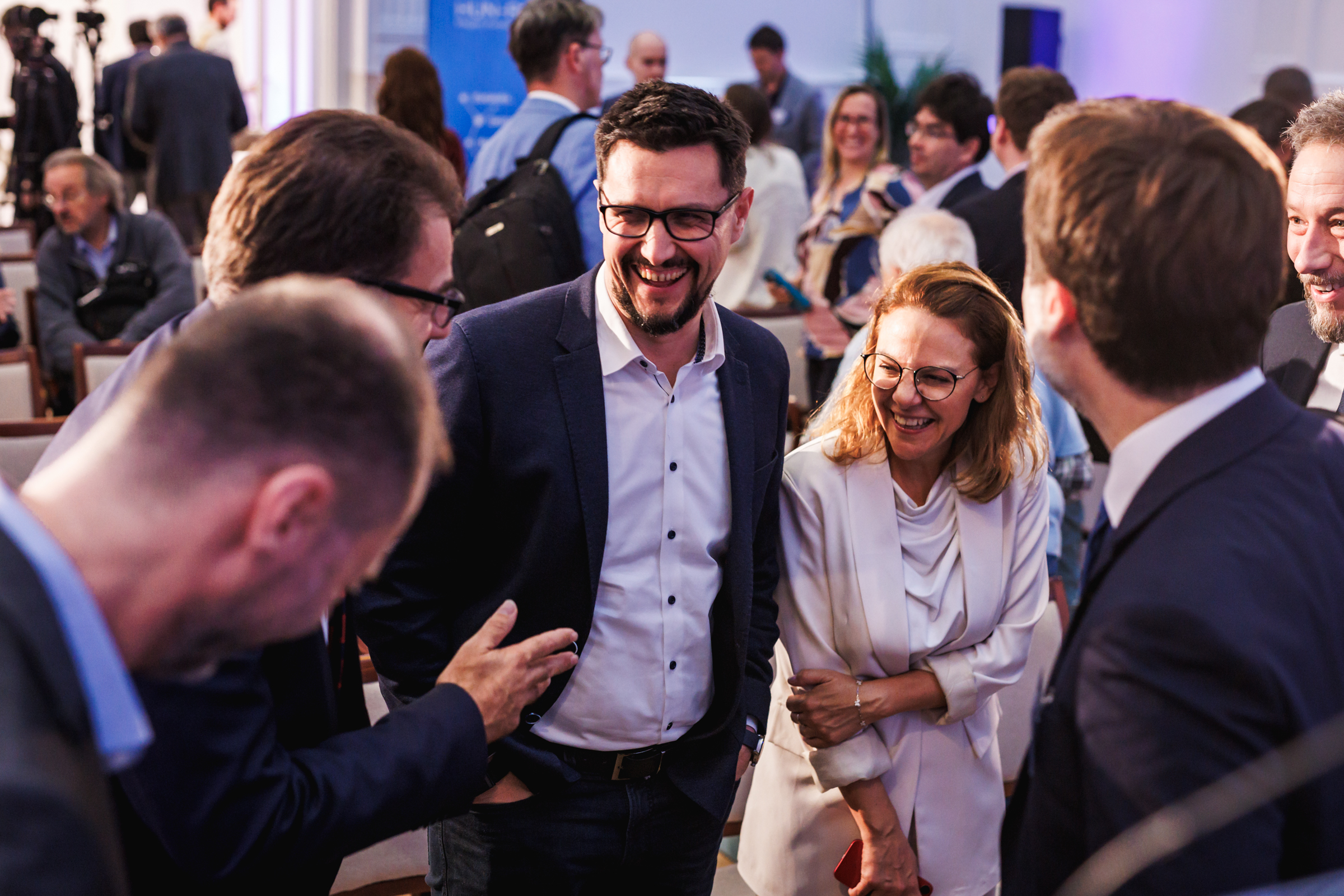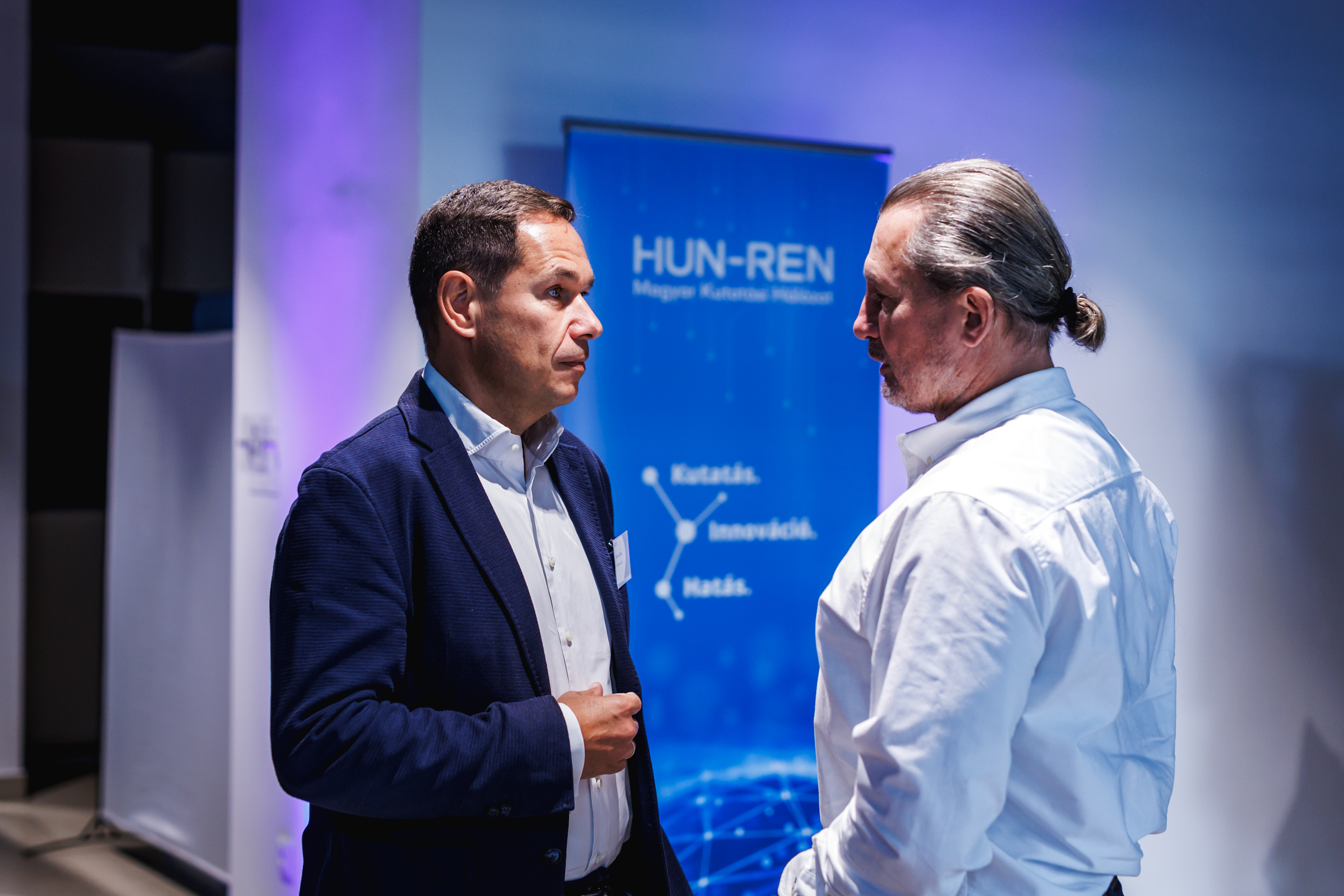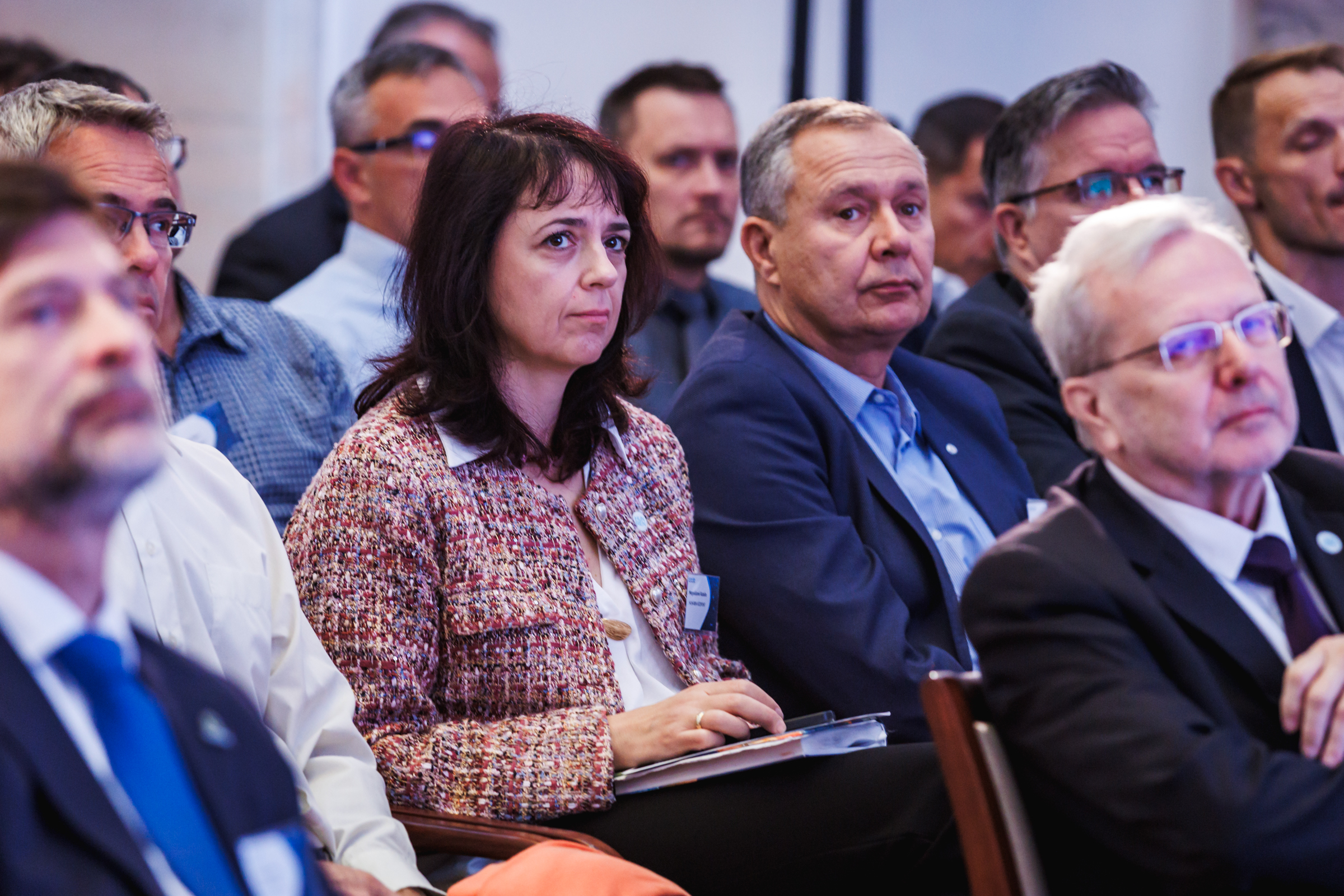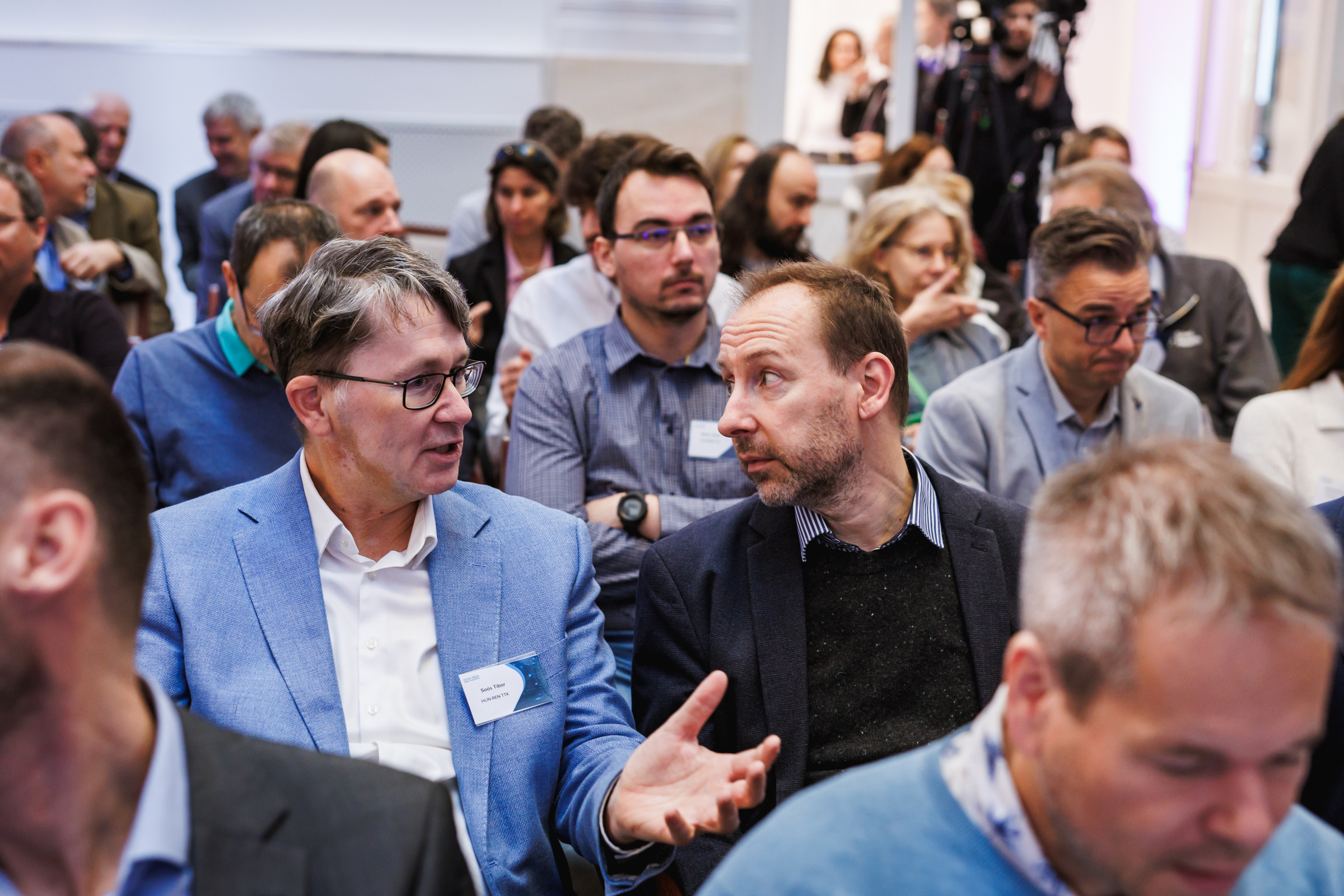HUNRENTECH: Research Excellence, Innovation and Impact
‘We want to see more real-world application, value creation and innovation originating in Hungary and achieving global recognition,’ said Roland Jakab, CEO of the HUN-REN Hungarian Research Network, at the HUNRENTECH Symposium. The event aimed to encourage researchers to translate their results into innovation. HUNRENTECH Kft., the technology-transfer company established by HUN-REN to support the network’s researchers, made its debut. Leading players in innovation — researchers, senior executives from major companies and investors — shared their experiences and plans for the future.
The HUN-REN Hungarian Research Network hosted a symposium on the significance and opportunities of technology transfer. Balázs Gulyás, President of HUN-REN, described the event as another milestone for Hungarian research. He said their goal is for HUN-REN to become one of the world’s best-performing research networks, where scientific achievements translate into innovation and impact. He emphasised the need to change the mindset that treats publication as the sole aim of science and research.
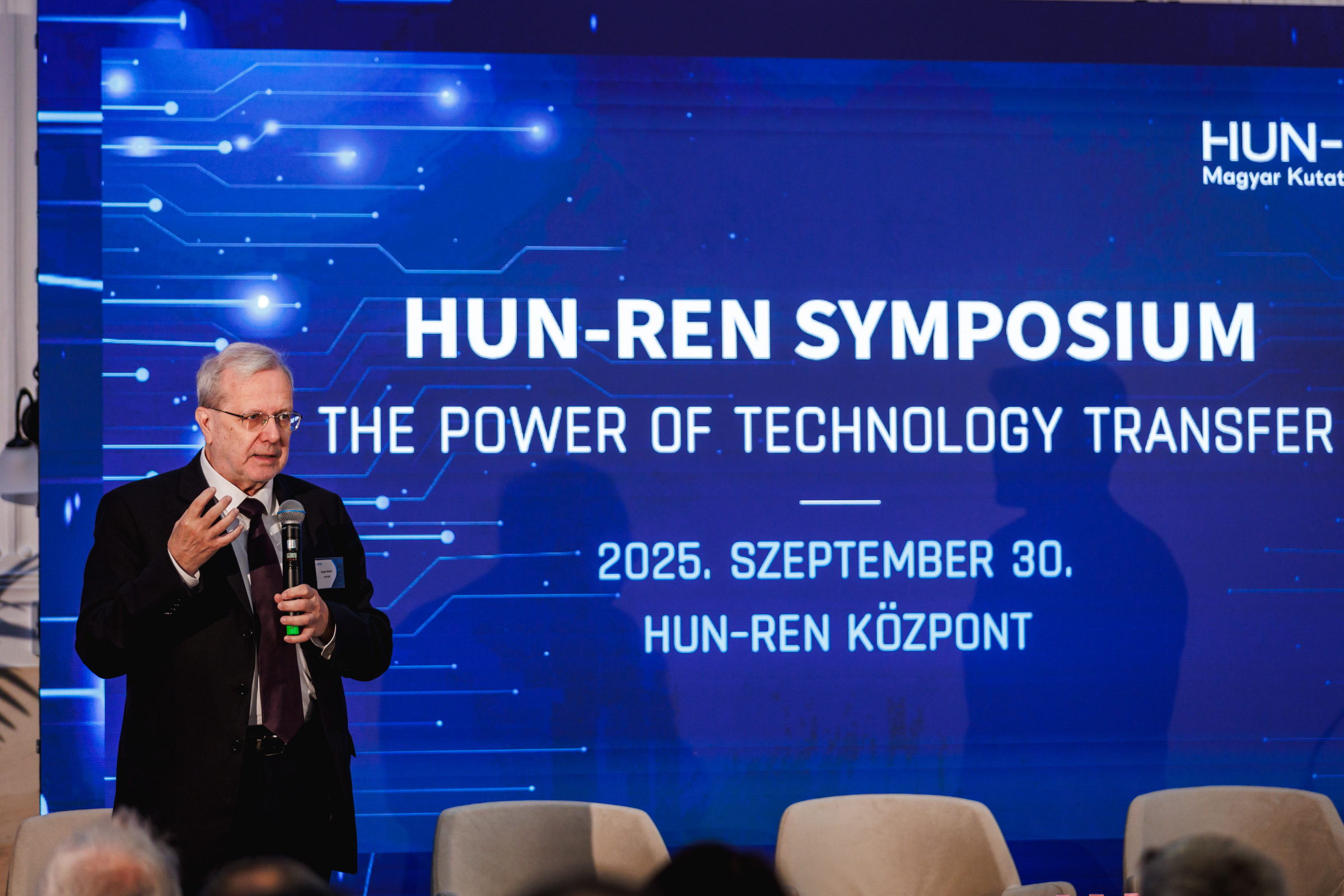
Fotó: Marton Nagy
‘We need to think in terms of the value chain so that new discoveries, models, and ideas can be put to use for society as quickly as possible — and so that people can feel their impact on both quality of life and economic circumstances sooner,’ said Balázs Gulyás.
The HUNRENTECH Symposium was organised to demonstrate how research results can be put to use, which mechanisms and tools are needed, and what is required to ensure those results deliver genuine economic and societal impact.
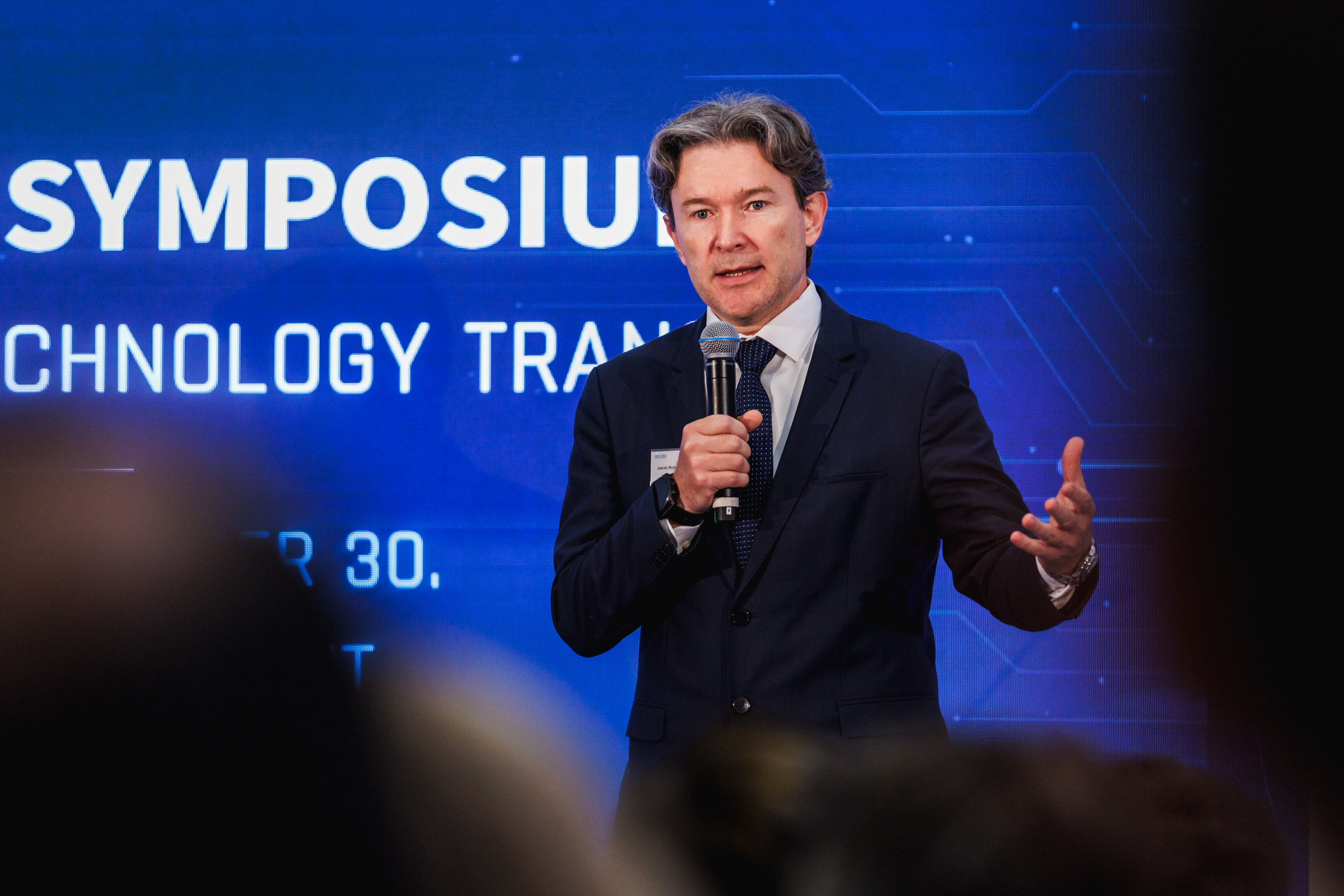
Fotó: Marton Nagy
‘We want to see more real-world application, value creation and innovation originating in Hungary and achieving global recognition. Today, we’re showcasing the tools to make that happen,’ emphasised Roland Jakab, CEO of HUN-REN. He added, ‘To this end, we are putting in place the right infrastructure and framework, and we will provide researchers with the full suite of AI tools.’
‘We intend to create an incentive system that makes the end-to-end pathway clear to everyone and, at the same time, supports value creation to truly get under way,’ he said.
The aim is to build an ecosystem that provides HUN-REN researchers with comprehensive support — including assistance with proposal writing, training, access to grant schemes and seed funding for applications. Jakab believes that the first one or two successes will help motivate and inspire other researchers to get involved.
He added that innovation requires substantial capital, which is why HUN-REN is establishing a hybrid venture-capital fund to finance researchers’ projects.
Attila Erdős, head of HUNRENTECH, gave a detailed overview of the new technology-transfer company established by HUN-REN to help researchers navigate the innovation-to-impact landscape. He noted that in many Hungarian research institutes, developments that could deliver value to society or the market remain behind lab doors for lack of the necessary support infrastructure. HUNRENTECH is there to help bridge this gap.
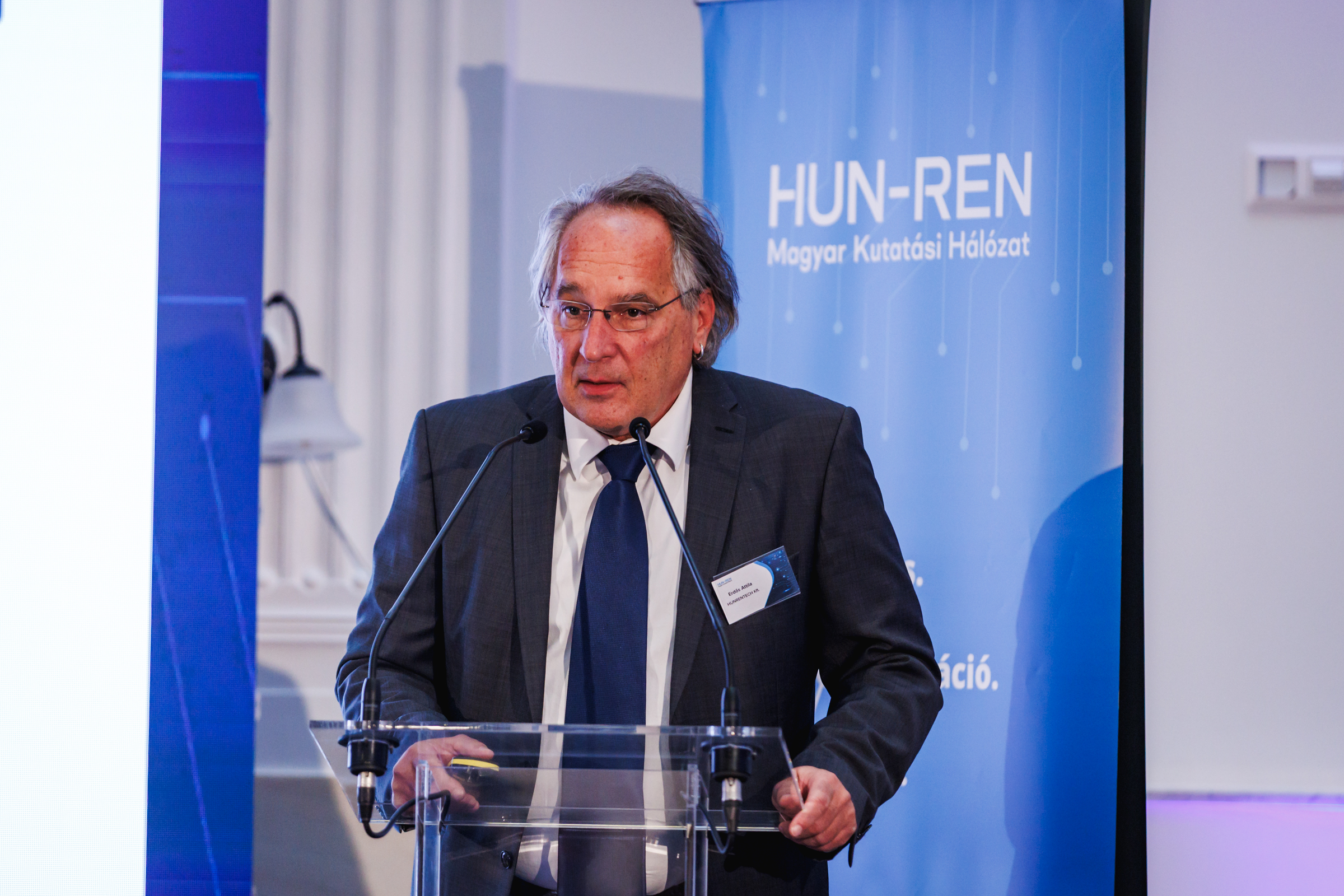
Fotó: Marton Nagy
Attila Erdős cited Cambridge Enterprise — one of the world’s leading technology-transfer companies — as a model, one where researchers can choose their collaborators and where innovation is an opportunity rather than an obligation. At Cambridge Enterprise, a significant share of the revenue from researcher-led innovations returns to the researchers, creating strong incentives. The organisation also places strong emphasis on training, nurturing personal relationships and fostering the innovation ecosystem.
‘A key lesson is that intellectual property must be protected; when founding spin-off companies, ownership structures need to be clarified from the outset, and institutes must take swift decisions if an innovation is to succeed in the market,’ he emphasised. Future plans include putting existing patents to use, strengthening industry links, launching new grant calls and training programmes aimed at innovative development, and establishing a management pool to support the growth of start-ups.
Collaboration is the foundation of the innovation ecosystem
For a healthy innovation ecosystem to function, researchers, investors, start-ups, large companies, and public-sector actors must recognise its significance and the importance of working together. This was one of the key messages from a panel discussion at the symposium, which explored the state of — and opportunities within — Hungary’s innovation ecosystem. Participants agreed that HUNRENTECH will play a key role in fostering collaboration among researchers, so that it is seen as an opportunity rather than a burden.
‘If we are aligned in wanting to work on technological innovations that make life better — with only the “how” left to resolve — then we have already taken the most important step,’ said István Szászi, Managing Director of Robert Bosch Kft. He stressed that no large company can innovate effectively in-house; collaboration with the research and academic community is essential.

Fotó: Marton Nagy
Péter Nagy, Scientific Director of the National Institute of Oncology and Head of its Department of Molecular Immunology and Toxicology, as well as a professor at Semmelweis University and the University of Debrecen, cited the United States as a good example. There, a dedicated state bank provides loans to those purchasing products from start-ups. He also emphasised the importance of motivation, continuous learning and understanding. ‘As researchers, we need to familiarise ourselves with the world of investors so that we can sell our science,’ he said.
According to Szabolcs Nagy, co-founder and CEO of Turbine, a well-functioning innovation ecosystem requires synergy, continuous development, an informed research community, investors and grant opportunities.
László Lengyel, Deputy President of the National Research, Development and Innovation Office (NRDI Office), said that building Hungary’s innovation ecosystem must proceed step by step.
AI in the service of innovation

Fotó: Marton Nagy
In their presentation, Gergely Szertics and Helga Balog reaffirmed that HUN-REN intends to use AI across the entire innovation value chain — from piloting and testing ideas, through identifying investors, to ensuring that discoveries genuinely reach society. ‘This matters because, at present, around 95 per cent of patented research never reaches users — the so-called “valley of death”,’ they noted in their talk.
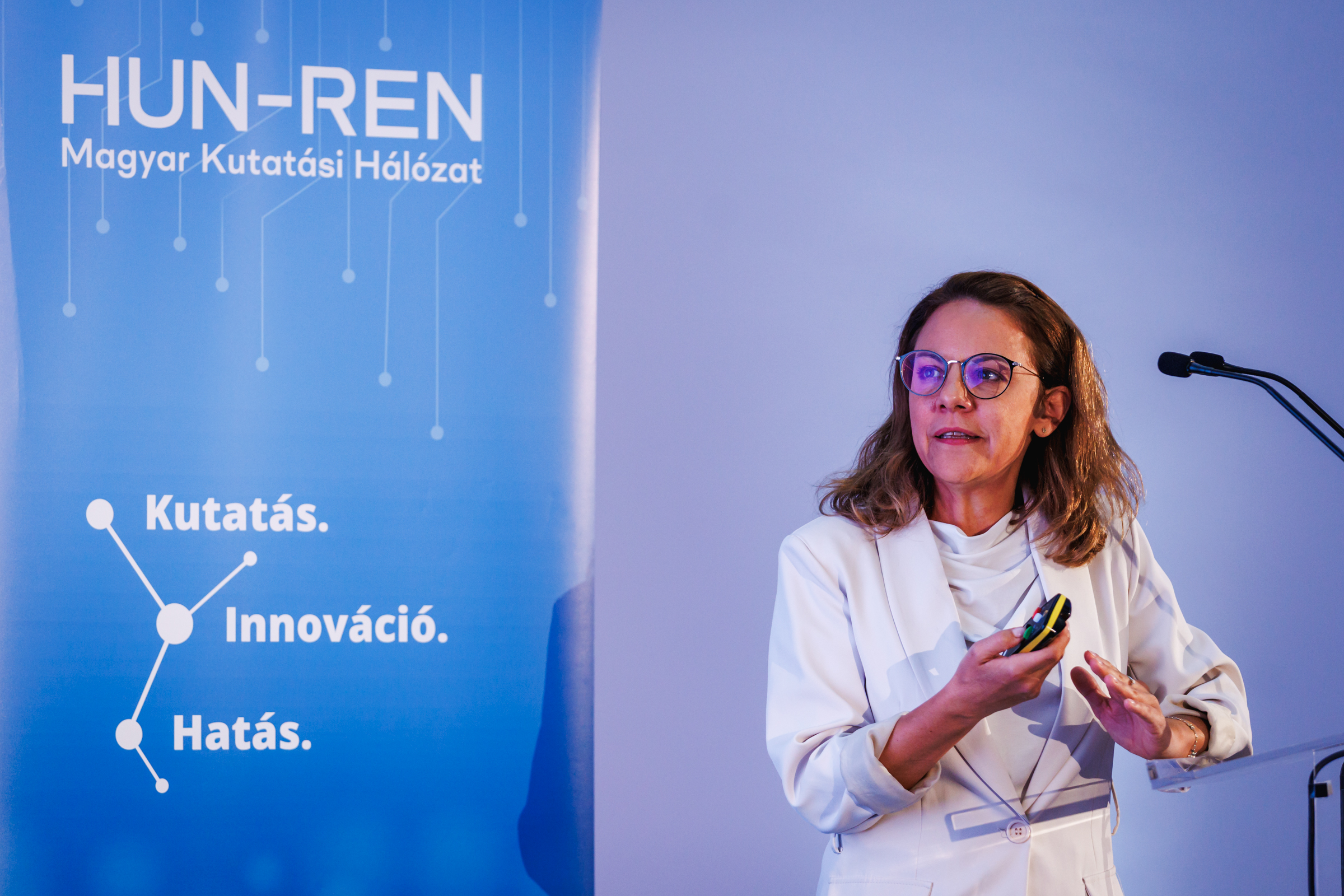
Fotó: Marton Nagy
Venture capital, investment opportunities and the world of patents
Ernő Duda, a biotechnology entrepreneur and founder of Medipredict, spoke about life-science start-ups and shared insights from his own experience. He noted that their incubator acts as an investor, providing €50,000 to €1 million in early-stage funding.
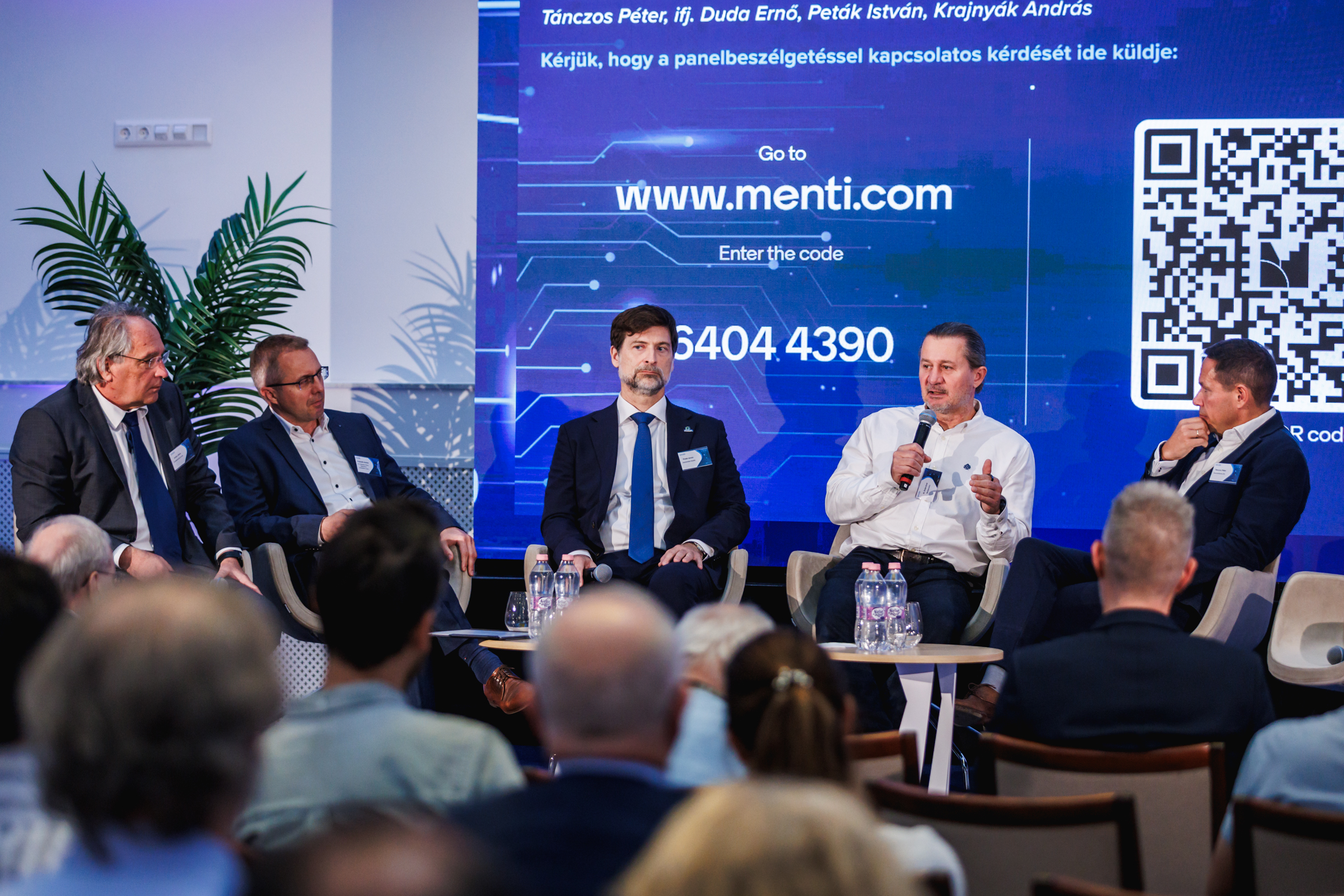
Fotó: Marton Nagy
Taking a legal perspective on the journey from innovation to tangible outcomes, András Krajnyák, a patent and copyright attorney, emphasised the importance of a clear IP strategy and the deliberate use of patent and other industrial-property procedures. He noted that patent filings in Hungary have been gradually increasing in recent years, yet the country still lags behind — even though Hungarian researchers’ expertise is fully on a par with their international peers.
Best practices and lessons from researchers who have successfully navigated the innovation landscape
Proven, real-world models and experience-based examples play a key role in strengthening the culture of technology transfer. In this spirit, five successful Hungarian researchers shared their success stories and highlighted the challenges they encountered along the way.
István Lám, co-founder and CEO of Tresorit, stressed that motivation is a crucial ingredient in innovation, illustrating the point with examples from his own experience. He added that while novelty is paramount in research, business often rewards replicating proven approaches — for instance, when building a finance function, there is no need to reinvent it from scratch.
Péter Ruppert — a network scientist, a member of the Barabás Lab at Boston University and the Ludwig Boltzmann Institute for Network Medicine, and President of Foodome Inc. — pointed out that research results translate into innovation only when they are protected as IP and the market response to the specific technological advance has been mapped. He added that negotiating and collaborating with investors and managers requires continuous learning.
Zoltán Takács, a professor at Imperial College London, is best known for his research in mass spectrometry. He has founded several companies developing analytical and medical devices. Although he describes himself as a thoroughly traditional researcher, his talk illustrated how a lab-based scientist can succeed in the world of technology transfer.
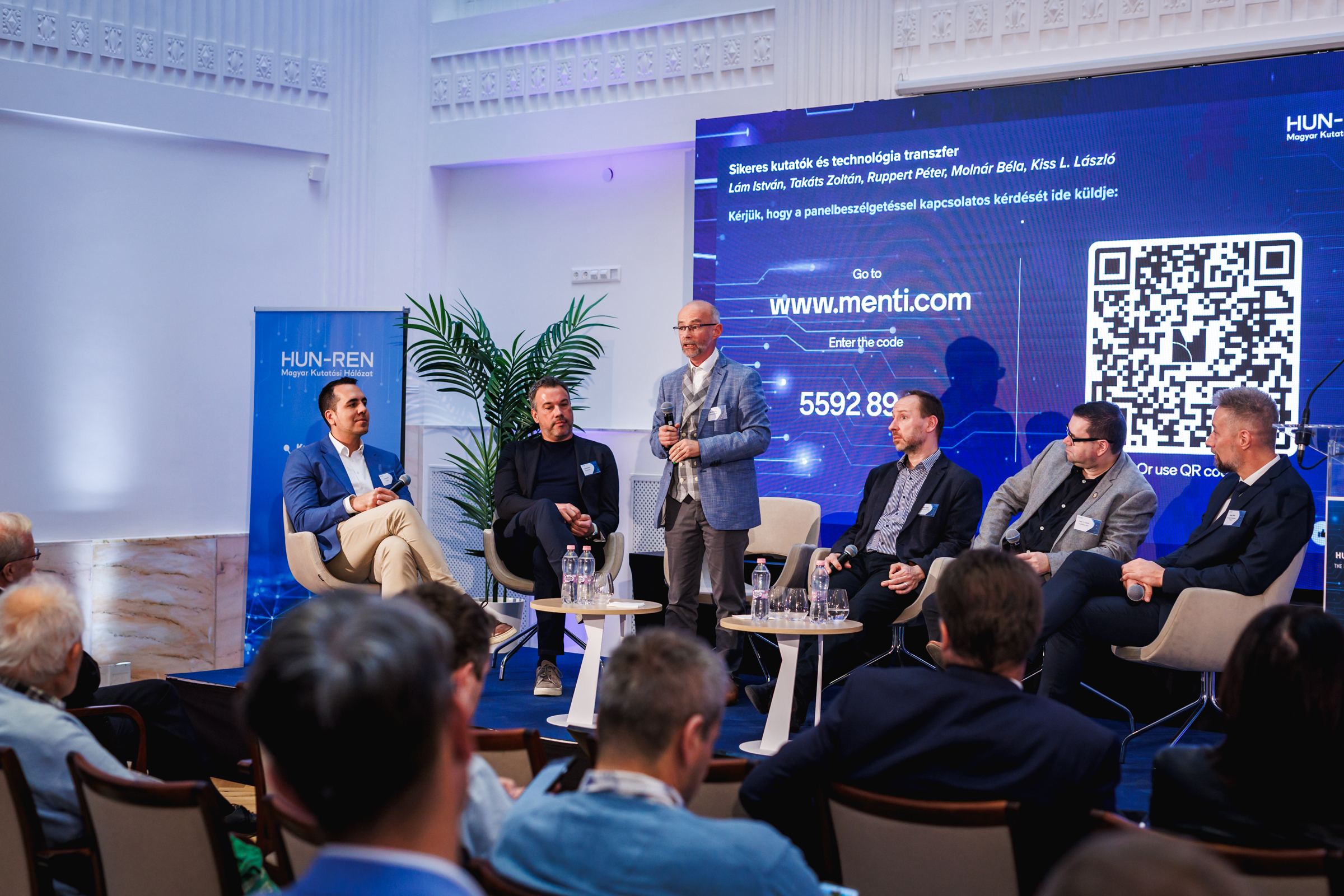
Fotó: Marton Nagy
László L. Kiss, a Széchenyi Prize-winning physicist, research professor and Director General of the HUN-REN Research Centre for Astronomy and Earth Sciences, explained how his team has turned public interest in space research and astronomy into success. Last year, Svábhegy Observatory welcomed 24,000 visitors and generated hundreds of millions of forints in revenue. At the same time, he considers it a failure that he has not yet been able to motivate his colleagues to translate several unique space-research projects into innovation.
Closing the symposium, CEO Roland Jakab reaffirmed that HUN-REN intends to provide comprehensive support for researchers and — through thematic, awareness-raising events — help drive the uptake of innovation, reinforcing a mindset that prioritises the societal and economic application of scientific results.




